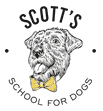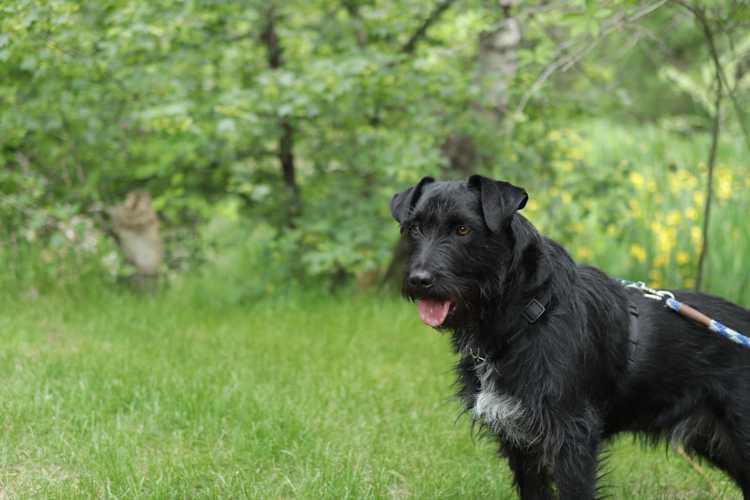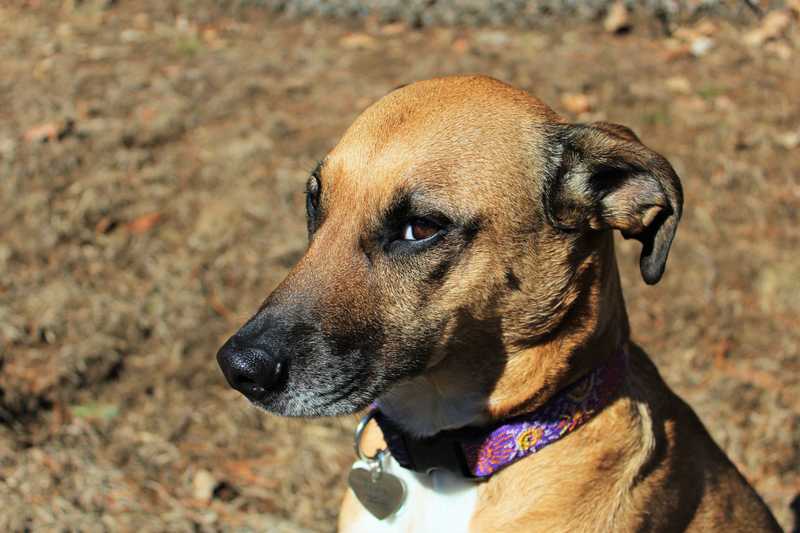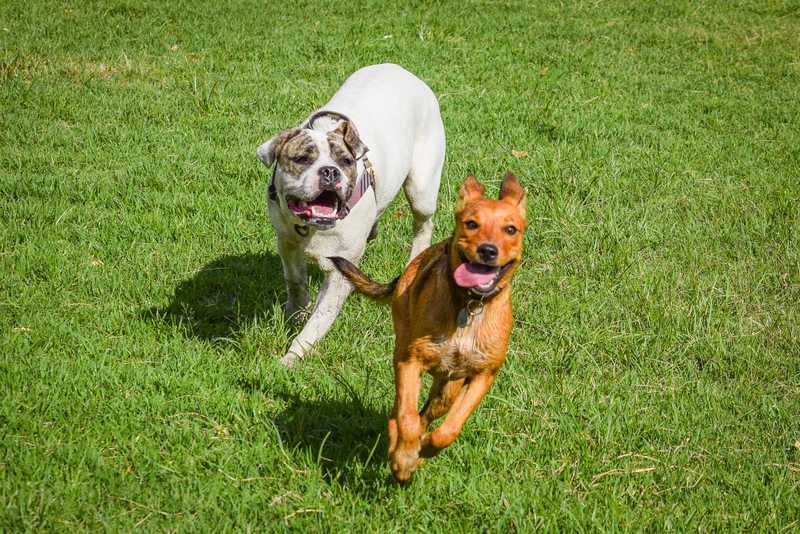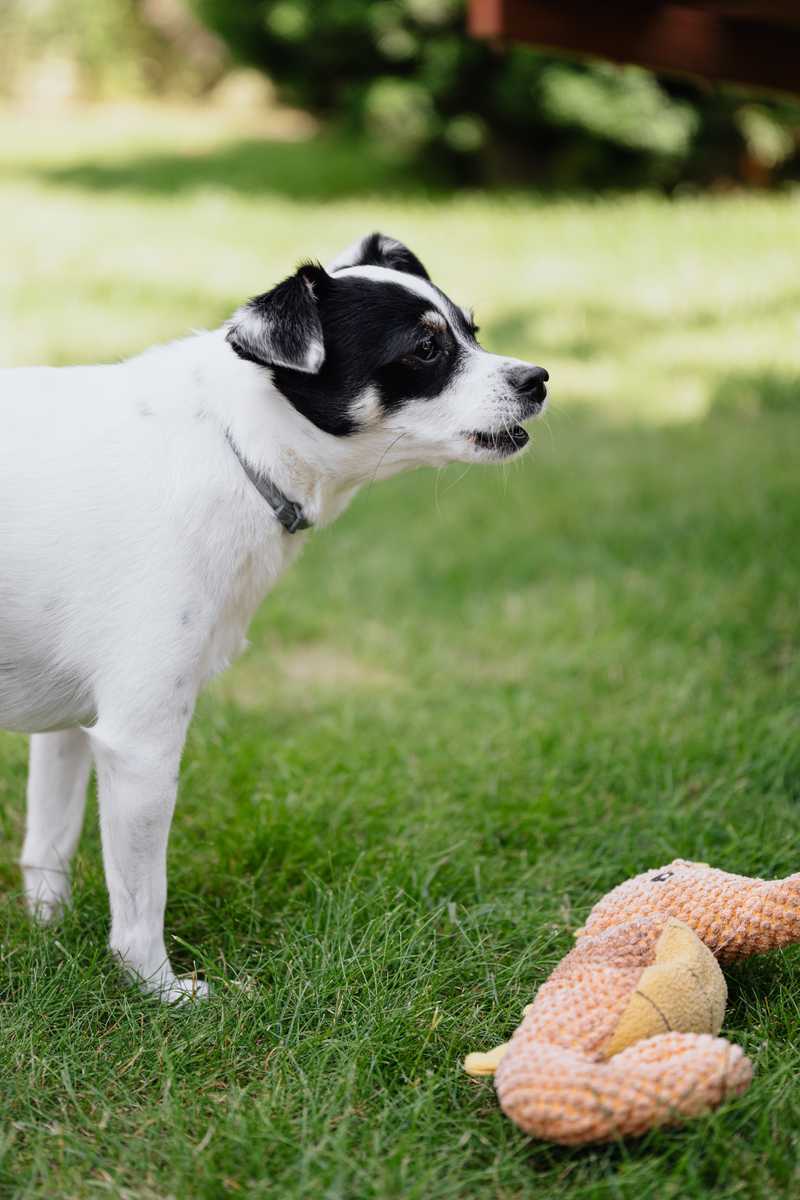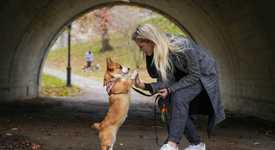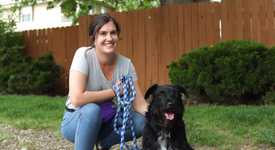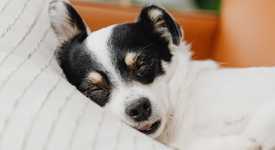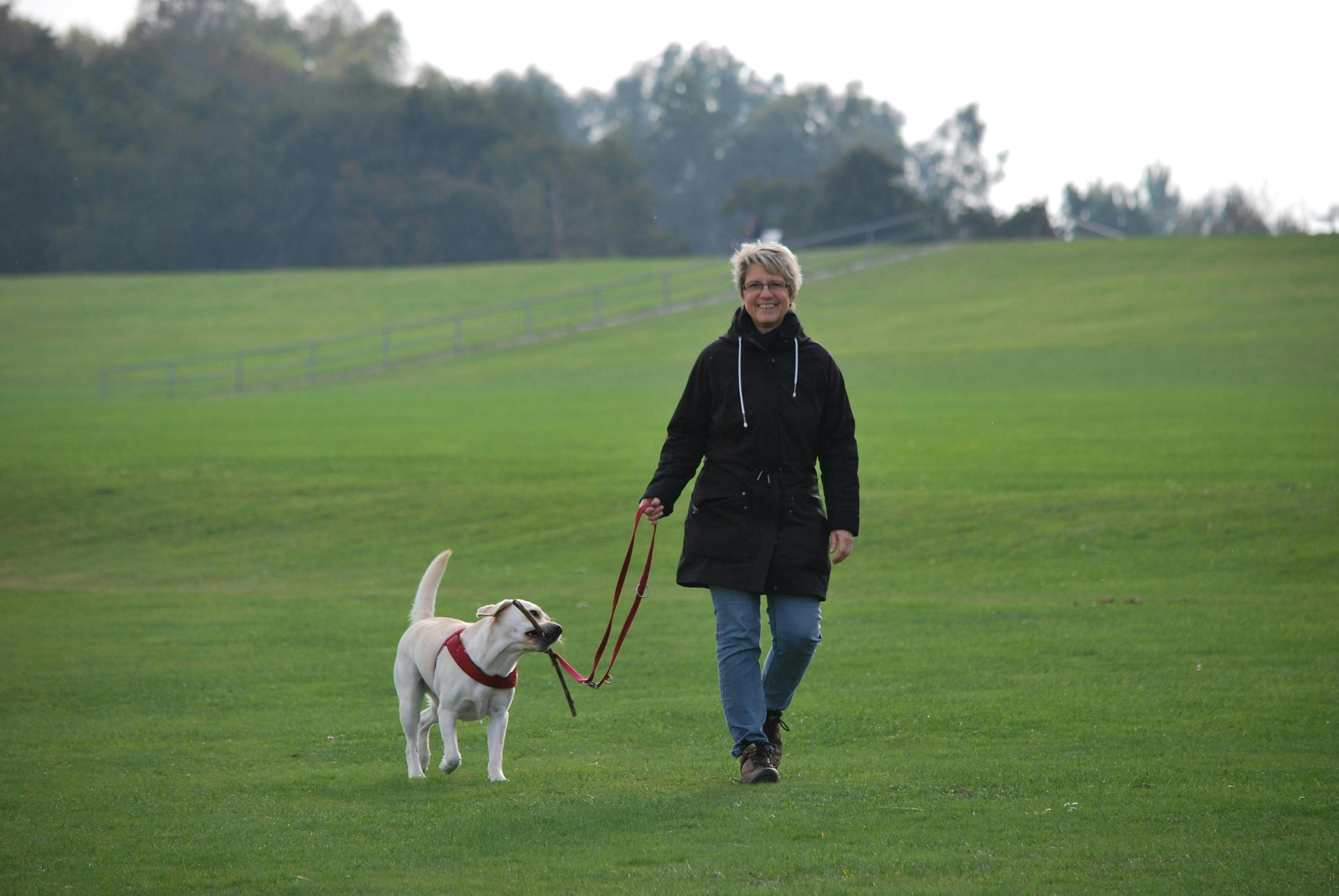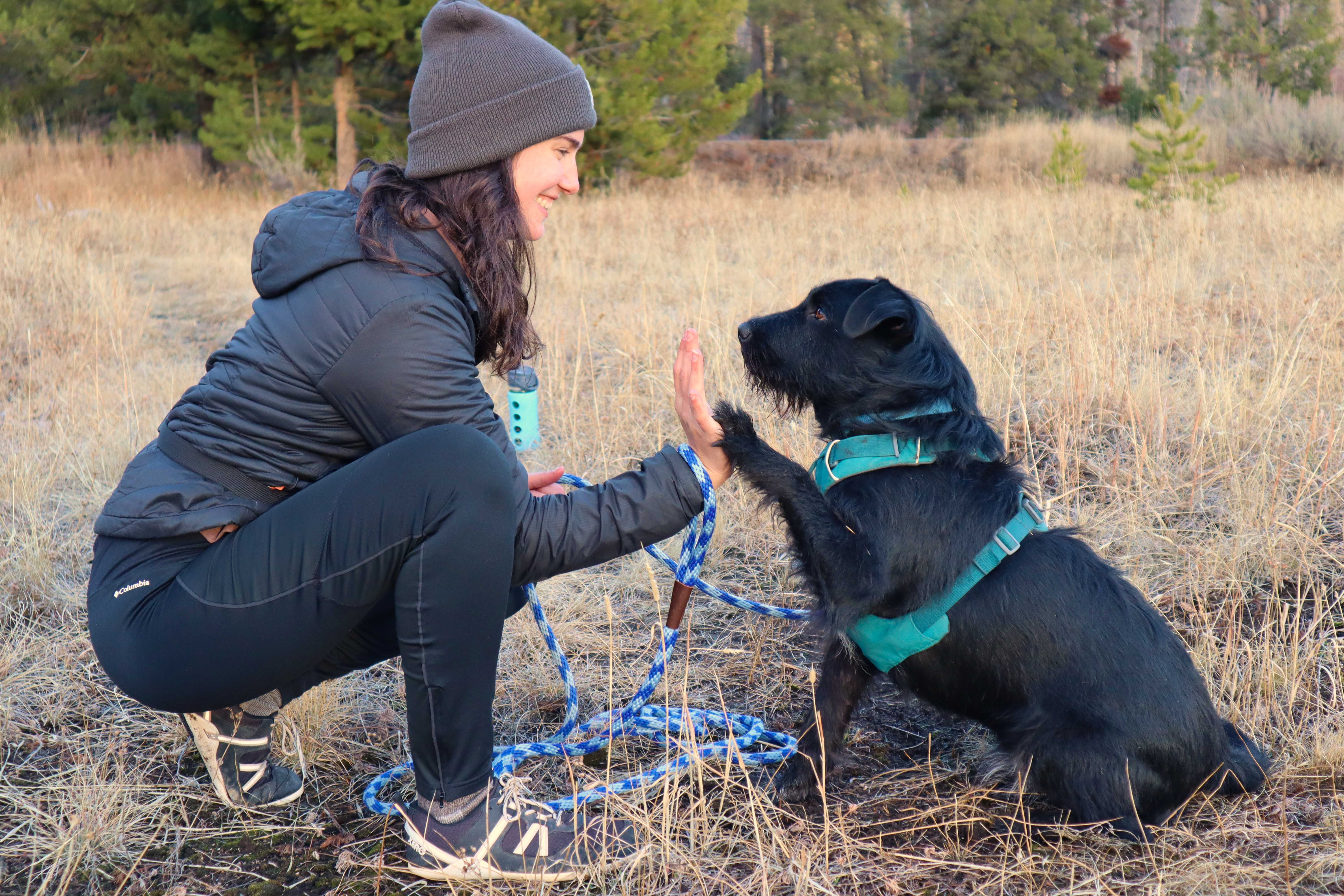Get Your Free Reactive Dog Masterclass
Unlock the secrets of rehabilitating your reactive dog with this masterclass video
Reactive dogs react to stimuli—another dog, person, bike, car, leaf—with a bigger reaction than is normal. A reactive dog is the one who lunges and barks at that super-chill pup who prances on by, who strains against the leash while huffing at any person who looks their way, who may be described with less-than-nice adjectives by people who don’t know about reactive dogs.
Most commonly, reactive dogs have over-the-top reactions toward other dogs or people. Sometimes both. Some reactive dogs only display reactions while leashed or otherwise constrained.
What Causes a Dog to be Reactive
It might feel like your reactive dog is out to get you—or that they’re exceptionally stubborn, rude, lazy, too smart, or too dumb.
I remember, back when my dog’s reactivity was more severe than it is today, screaming into a pillow because I was so frustrated. Why was he barking and lunging at other dogs? What was wrong with him? Why couldn’t he just stop?
While we can’t exactly know what is going on in our dog’s brains—if only!—reactivity typically stems from anxiety, frustration, or a combination of the two.
Anxiety-Based Reactivity
Think of anxiety-based reactivity this way: say you’re afraid of spiders. You have full-blown arachnophobia. You probably scream or jump if you see a spider near you. That reaction is probably even bigger if the spider does something that you perceive as threatening—like creeping across the floor toward you. If the world was full of spiders, you would likely be constantly on edge, scanning, ready to react at a moment’s notice.
That’s what the world is like for a reactive dog with fear-based reactivity.
Causes of Anxiety in Dogs:
Anxiety can develop in a myriad of ways.
First of all, puppies need to be properly and positively socialized to a variety of things and experiences. By things, I mean anything that may be a trigger for a reactive dog: that is other dogs, people, children, men with beards, skateboarders, bicycles, women wearing hats, and so on. If they’re not that can lead to feelings of uncertainty or anxiety around those things and experiences.
Puppies who didn’t have many experiences—or who were taken away from their mom and litter too young—may also have a generalized fear of the world. Singleton dogs—those born without littermates—can also struggle with generalized fear.
Dogs can also have bad experiences with someone or something that can result in them feeling anxious or fearful about that someone or something. This is especially significant if the bad experience happened during one of their first times meeting or experiencing that thing. For example, if a dog meets a child for the first time and that child tugs on the dog’s tail, the dog may go on to think that all children are tail-tugging meanies.
A bad experience is also significant if it occurs within a fear period during a dog’s puppyhood. There are two documented fear periods — between eight and ten weeks of age and again when a puppy is between six to 14 months old.
For some dogs, there may also be a genetic component at play that makes them more prone to fear or anxiety than other dogs.
In a lot of cases, there's more than one cause or they feed off of one another. A dog prone to anxiety will be less resistant to a bad experience than a genetically calmer dog.
It's usually impossible to tease out the specific reason why your dog has anxiety-based reactivity. And, in the end, it usually doesn't matter why your dog has a fear response to something. It just matters that they do and that you take that fear seriously.
(That said, sometimes, it does matter why. For example, if your dog is developing a fear response to other dogs because of a bad situation at a doggy daycare. In that case, it's important to take your dog out of that situation right away!)
Remember, a reactive dog is living in a world full of spiders. And their reactions that seem outrageous to you are perfectly sensible to them.
Frustration-Based Reactivity
Frustration can also be the underlying emotion behind your dog’s reactivity. If your dog seems to only demonstrate their reactivity while leashed or otherwise controlled (frequently called leash-reactivity or barrier-reactivity) they may be frustrated that they can’t get to their trigger.
For example, your dog may LOVE other dogs. If they’re leashed and unable to get to those dogs then they may start lunging or barking because they’re frustrated that the leash is holding them back from a good time. That frustration might be even stronger if you let them meet dogs while leashed sometimes, but not all the time.
Of course, that doesn’t mean you should let your dog off-leash all of the time. Leash laws are very important to follow.
Plus, a lot of dogs who have frustration-based reactivity aren’t exactly polite when greeting dogs or people. If your dog impolitely approaches a dog there may end up being a conflict, which could make your dog’s reactivity worse in the long run. Or, even, cause reactivity in that other dog.
Additionally, it’s common for frustration to turn into anxiety if there are leash corrections or bad on-leash encounters.
Your dog’s reactivity may also be a combination of anxiety and frustration.
Why Does My Dog Bark and Lunge at Dogs or People?
Now, reactive dogs react when they see their triggers. Hence the name. But why do they growl, bark, lunge, or madly pull? Again, it’s not because they’re secret evil masterminds trying to mess with your head.
It’s because your dog is trying to achieve something.
If your dog is afraid of strangers, she might bark and lunge at them in order to get them to leave.
If your dog loves other dogs, he might lunge and pull at them in order to get closer and play.
The three most common reactive dog desires are:
- Your dog wants their trigger to leave
- Your dog wants to leave
- Your dog wants to get closer to play
To figure out what your dog wants, pay close attention to your dog’s body language:
- If your dog is stiff and standing high with their body squared to the trigger, they most likely want that trigger to leave. Their body language is attempting to be threatening: the same way us humans puff ourselves up when confronting another person.
- If your dog is lower to the ground and switches between lunging toward the trigger and away, then they likely want to get the heck out of there. They might be conflicted, thinking that they have to scare the trigger away or keep an eye on it when deep down they would prefer to flee.
- If your dog is fairly loose and vocal then your dog may just want to play. If your dog is able to greet without any type of aggression or anxious body language that further suggests that your dog actually has positive feelings toward their trigger. (Only allow your dog to greet their trigger if you are certain they are friendly or with the appropriate safety measures: gates, muzzles, or the supervision of a certified dog trainer.)
While seemingly simple, it can actually be very difficult to try and deduce what your reactive dog wants. Reading dog body language—and the body language of your particular dog—is a skill that comes with time. Additionally, dogs may be conflicted and have multiple underlying emotions.
The good news is: if you have just begun your rehabilitation journey then you don’t need to know what your dog wants right now. The beginning steps toward rehabilitation look the same.
But, as you continue to work through reactive rehabilitation, it can be helpful to understand the reasons behind your dog's reactivity. Again, try and pay attention to your dog's body language to understand what they're telling you. If you need additional help, work with a qualified, positive-reinforcement based trainer.
Are Reactive Dogs the Same as Aggressive Dogs?
Some people may tell you that the term “reactive dog” is just a polite rebranding of “aggressive dog." But, I, and a lot of professional dog trainers out there, don’t really agree with the term aggressive dog. All dogs have the potential to be aggressive when put in situations where they feel they have no other choice. Reactive dogs may just have a lower standard for what these situations are.
Be sure to take proper safety precautions when working with any reactive dog and never put them in overwhelming situations where they may feel like they have to bite.
Conclusion
The next time your dog reacts, take a breath and try to remember what your dog is trying to achieve. Just like you would have patience for a family member who screams when they see a spider, try to have patience for your dog too.
Real reactive dog rehabilitation focuses on addressing these underlying emotions for lasting results. Once you change the emotion, you can change the behavior.
But the first step is simply recognizing that emotion. I hope, after reading through this article, that you're well on your way to doing just that.
